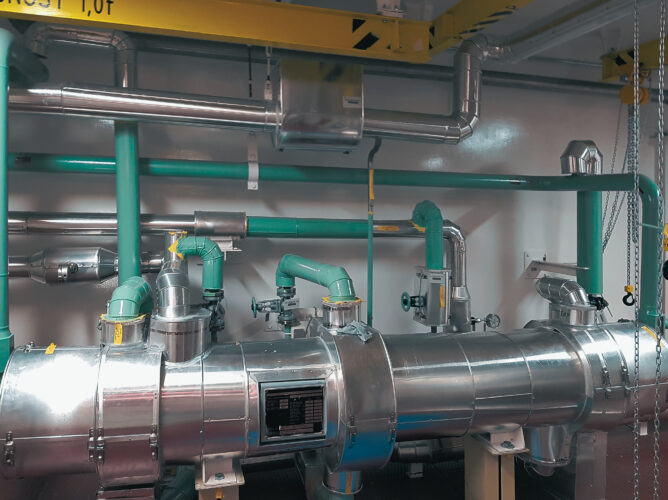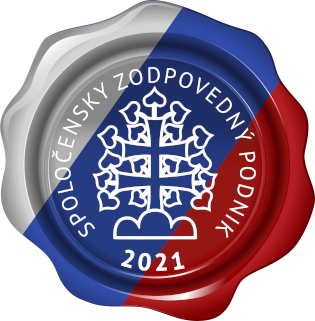Together with the investor and other Contractors, we made yet another important step towards completing Unit 4 at the Mochovce Nuclear Power Plant. Between December 2, 2024, and January 1, 2025, we conducted the first hydraulic test, the so-called „Cold hydro”, per the 4P201 test programme.
What is a Cold Hydro test?
The test primarily consists of a pressure leak test and circulation flushing of the primary circuit, a pressure strength test of the steam generators’ secondary side, and related functional tests of critical components of the primary circuit, including:
- Pressurized water reactor;
- Steam generators;
- Main circulation piping;
- Main circulation pumps with auxiliary systems, and
- Pressurizer system.
Difference between Cold and Hot Hydro
The Cold hydro test is the first comprehensive step in the non-active tests phase (without fuel), whereby all the primary circuit’s main systems are operational. The reactor is only partially assembled, meaning it does not contain fuel rods or their mock-ups. A throttling plate simulates the hydraulic resistance of the reactor. The reactor lid is only provisional, without control rod actuators.
During a cold hydro, the temperature of the primary circuit oscillates between 110 ÷ 135°C. The pressure reaches a nominal value of 12.26 MPa (with a short-term exception of the pressure leak test, when it is raised to 13.7 MPa).
The scope of tests is minimized only to enable the operation of the basic systems involved. Throughout the entire process, the chemical regime of a primary circuit coolant is being monitored. A prerequisite for completing cold hydro is to achieve a required cleanliness level of internal surfaces.
During the hot hydro, the parameters in the primary circuit get closer to the nominal values. The temperature is nearing 260°C, and the pressure is 12.26 MPa. As part of hot hydro, a pressure strength test will be conducted on the primary circuit, including the integral parts of the primary circuit loops and the reactor, at a pressure of 19.12 MPa. The entire set of tests is carried out, focused on verifying the smooth cooperation of the primary and partially secondary circuit systems under the standard operation regimes, during the fallout of essential systems or equipment, and under specific emergency conditions.
Cold Hydro Objectives
The systems (equipment, valves, and piping of the primary circuit) undergo a pressure leak strength test at 13.7 MPa and a temperature of 110 ÷ 135 °C for 60 minutes. The internal surfaces of equipment and piping are then cleaned to the required level through circulation flushing until the water in the primary circuit achieves the prescribed quality. Additionally, functional tests of individual equipment are performed in a limited scope and with reduced temperature and pressure parameters.
In addition to the primary circuit, functional tests associated with the secondary circuit’s pressure test and the preservation solution’s replacement are also carried out.
ENSECO Equipment Scope:
- Volume control system and coolant discharge system
- Oil management for make-up pumps
- Hydrogen recombiner
- Continuous coolant purification system
- Controlled leaks from the primary circuit
- Steam generator blowdown and drain
- Contaminated condensate tanks and pumps
- Borated water makeup system
- Chemical solutions preparation and makeup system
- High-pressure safety injection system
- Passive safety systems and low-pressure safety injection system
What’s up next?
Once the cold hydro is finished, all essential systems and components of the primary circuit are checked by a so-called “Small revision.” The mock-ups of fuel and control rods are loaded in the reactor, which is closed off by a standard lid containing the control rod actuators.
A hot hydro will be performed, after the successful completion of which the systems of the nuclear unit will be ready for fuel loading and the transition to the so-called “Active tests“.
These steps will also require the same quality of management and a high level of cooperation between Slovenské Elektrárne and other contractors, as demonstrated during the successful completion of this cold hydro test. We thank everyone involved and continue with the commissioning activities.





